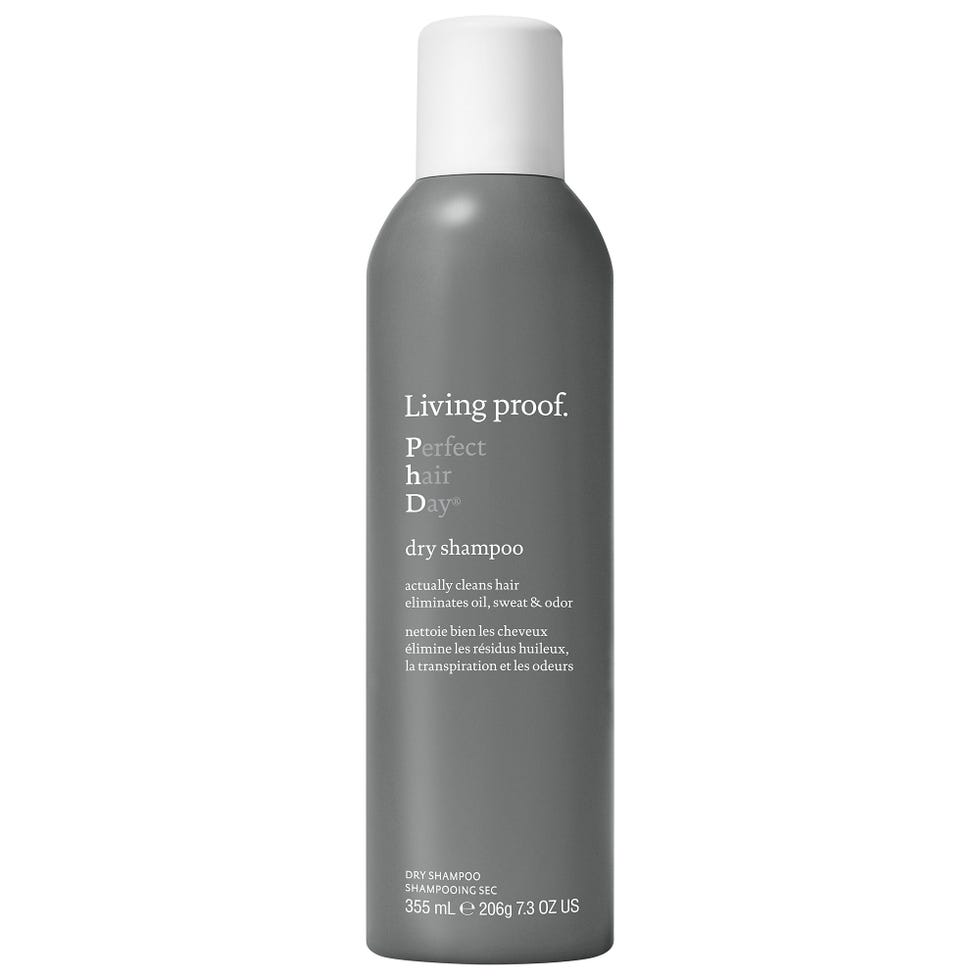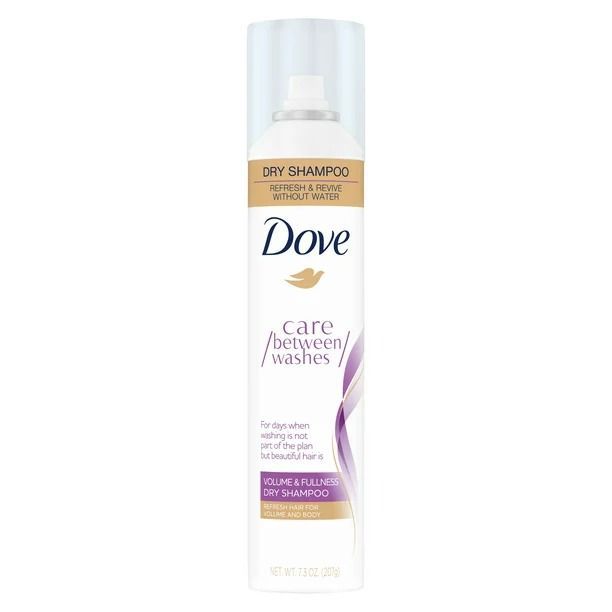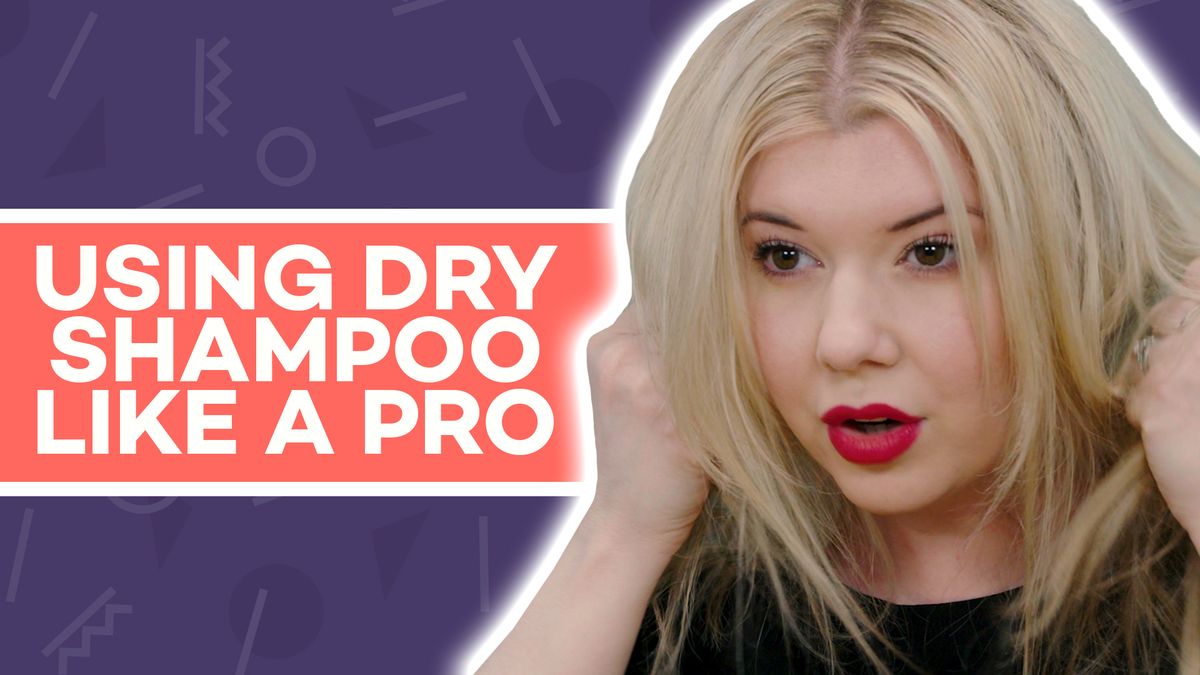Dry shampoo is pretty wonderful. Typically made with a starch component, dry shampoo is used to eliminate and absorb sebum, the scalp’s natural oil that makes hair look greasy after a day (or two, or three) of no washing.
“The components of starch absorb the oils to give a grease-free appearance and feel,” which is useful when prolonging your blowouts and keeping hair oil-free between washes, says Gio Bargallo, colorist at Rita Hazan in New York City. ” It can also be used in hairstyling to create volume and body.”
So yes, it’s basically a miracle product — but only when it’s used correctly. Whether you’re using an aerosol spray, powder, or foam dry shampoo, there are some pretty common mistakes we all make that can lead to dandruff-like flakes, ashy roots, and dull and dry hair. If you know how to use dry shampoo correctly, though, it can save you so much time and energy spent hair styling.
This is how to use dry shampoo the right way, according to the pros.
1. Use the right color for your hair.
If you have dark brown hair and use a traditional dry shampoo, you’ll wind up with dull roots and an unflattering white cast to your hair. On the flip-side, if your hair is blonde and you pick a dark shade, you’ll end up with discolored roots. Instead, pick a tone that matches your color most closely. Some tinted formulas can even double to camouflage gray roots in a pinch.
2. Shake it up.
Before even opening your dry shampoo, shake up the bottle to evenly distribute the formula. The starch in aerosol formulas can settle at the bottom between uses, and shaking it ensure that the formula is well-blended for best results.
3. Don’t spray too close to your scalp.
On dry hair, “hold the dry shampoo four to six inches away from the head and spray directly at the roots,” says Ardree Merriweather, Lead Educator at Drybar. You can spray up to 12 inches away from the roots, which allows the oil-zapping starch to properly exit and land evenly on greasy roots. When using a powder formula, sprinkle it near your scalp but avoid applying product directly to your part, which can make hair look chalky and prove difficult to remove.
4. Keep it moving.
“Do not spray continuously in one section,” says Merriweather. If you do, you’ll end up with a spot of product at the roots that’s difficult to disperse. Instead, use a sweeping motion to cover roots in an even, thin layer of product. “Moving back and forth in a swaying motion [ensures] you don’t over-concentrate an area,” says Bargallo.
5. Only apply dry shampoo where hair is greasiest.
Don’t spray dry shampoo all over your head — just stick to the top couple inches. Chances are that the bottom of your hair isn’t greasy, so applying an oil absorber all over can just make your hair stiff and lackluster. Instead, “identify the parts of your hair that are oily [by] sectioning the hair to expose the scalp and roots,” says Bargallo.
6. Don’t use too much product.
When your hair is greasy, a good dose of dry shampoo can make it look fresher, but apply too much and your hair will look dull and discolored. “Overusing dry shampoo is a common mistake that can make your hair dry, gritty, and stiff,” says Merriweather. “To avoid these issues, it is best to use a small amount and massage it through the root.” Start with a little spritz dry shampoo, then wait a few minutes, and then add more if you feel like your hair is still too greasy.
7. Let it sit.
After you spritz on dry shampoo, don’t immediately brush or shake it out. Instead, give the product a chance to work into your hair and really absorb the oil at your roots by letting it sit for a couple minutes before you massage it in and brush or comb it through.
8. Massage product into the hair.
After letting the product soak into your hair, use your hands to work the dry shampoo into your scalp. If you don’t, it just sits on top of your hair and isn’t able to do its job. Working the product into your hair also helps nix any telltale chalkiness, too. To get rid of white residue, you can use a brush to comb product through or a hair dryer to blast roots and help remove excess product once it’s had time to do its job.
9. Don’t use it every day.
“You can use too much dry shampoo,” says Bargallo. Despite its name, dry shampoo doesn’t actually clean hair, but rather adds starchy buildup to absorb oils. Bargallo says that using dry shampoo too often can be bad for your hair by clogging your follicles. This weakens hair’s strength, potentially leading to hair loss and skin issues like infections, dermatitis, and acne.
Instead, give your scalp a chance to breathe between washes: Our pros recommend only using dry shampoo one to two times a week. “For really oily hair, you can use dry shampoo two to three times a week,” says Merriweather.
10. Try using it at night.
GH Beauty Director April Franzino says that while dry shampoo can be applied any time your hair needs a boost, using it at night plays a big role if its efficacy. “We like using it before bed,” she says. “Hair will absorb it as you sleep and look refreshed in the morning.”

Contributor
Sam’s enthusiasm for makeup is only rivaled by their love of all things relating to cats. In their spare time, they enjoy watching scary movies, putting avocado on everything, and seeing how many shades of the rainbow they can dye their hair before 30.
Deputy Editor
Jessica (she/her) is a deputy editor at the Good Housekeeping Institute and a longtime product tester, reviewer, writer and editor of beauty and lifestyle content. She has over a decade of industry experience, previously as beauty editor at USA Today’s Reviewed where she launched the Beauty vertical and tested hundreds of products and has covered trends for publications like The Boston Globe and The New York Times. You can usually find her sorting through piles of beauty products — and testing the best ones on camera.
Denial of responsibility! My Droll is an automatic aggregator of Global media. In each content, the hyperlink to the primary source is specified. All trademarks belong to their rightful owners, and all materials to their authors. For any complaint, please reach us at – [email protected]. We will take necessary action within 24 hours.





